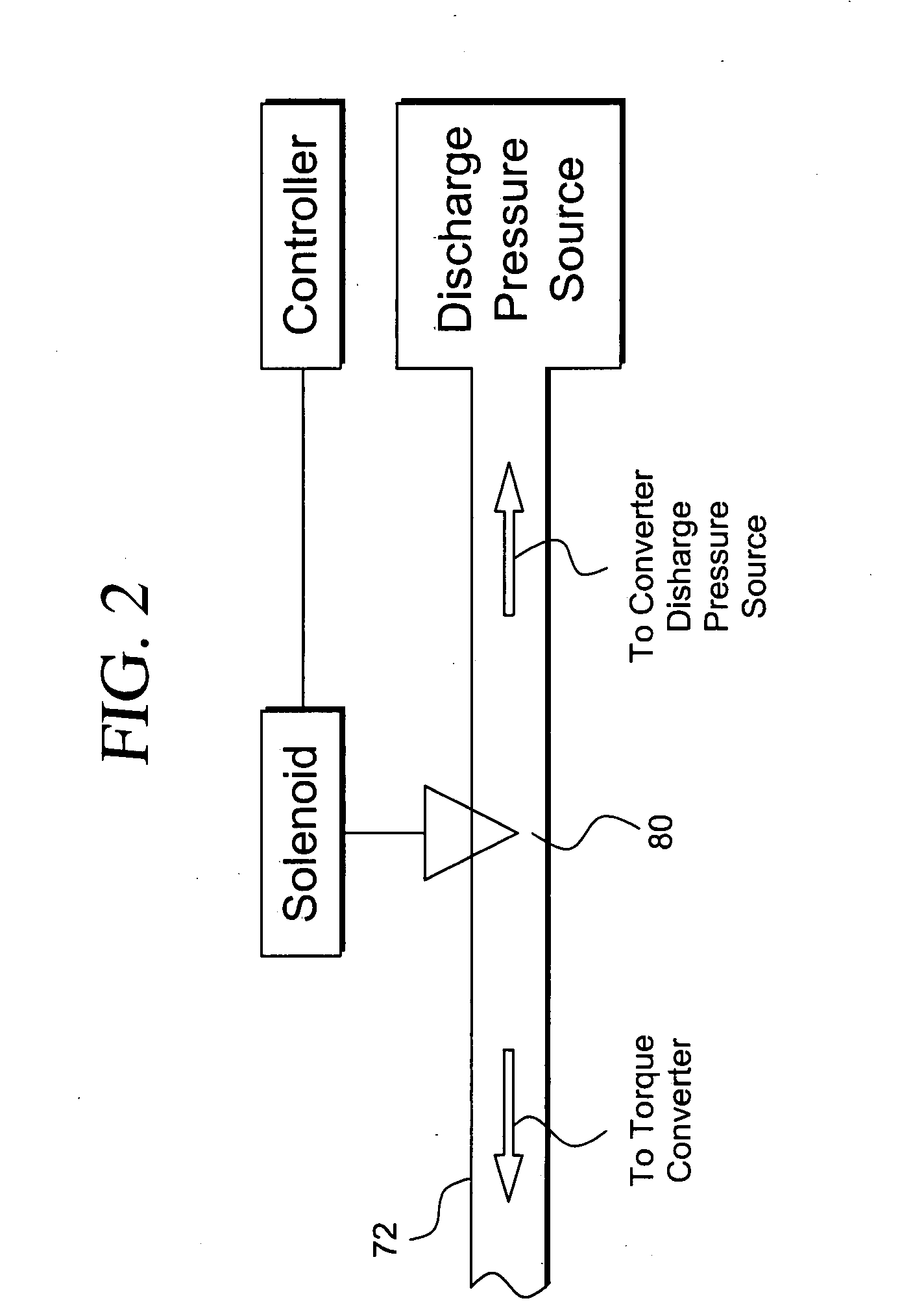Torque converter impeller clutch control
- Summary
- Abstract
- Description
- Claims
- Application Information
AI Technical Summary
Benefits of technology
Problems solved by technology
Method used
Image
Examples
Embodiment Construction
[0024]Referring now to the drawings, there is illustrated in FIG. 1 a torque converter 10, which is arranged about a central axis 12 and includes a bladed impeller 14, a bladed turbine 16, and a bladed stator 18. The impeller, stator and turbine define a toroidal fluid flow circuit, whereby the impeller is hydrokinetically connected to the turbine.
[0025]The stator 18 is secured to, and supported for rotation on a stationary stator sleeve shaft 20. An overrunning brake 22 anchors the stator to shaft 20 to prevent rotation of the stator in a direction opposite the direction of rotation of the impeller, although free-wheeling motion in the direction of rotation of the impeller is permitted. The turbine 14 is secured to a rotating transmission input shaft 24, which transmits torque to the transmission gear box (not shown). A torque converter housing 26, surrounding the turbine, impeller and stator, is driveably connected to the crankshaft of an internal combustion engine (not shown) or ...
PUM
 Login to View More
Login to View More Abstract
Description
Claims
Application Information
 Login to View More
Login to View More - R&D
- Intellectual Property
- Life Sciences
- Materials
- Tech Scout
- Unparalleled Data Quality
- Higher Quality Content
- 60% Fewer Hallucinations
Browse by: Latest US Patents, China's latest patents, Technical Efficacy Thesaurus, Application Domain, Technology Topic, Popular Technical Reports.
© 2025 PatSnap. All rights reserved.Legal|Privacy policy|Modern Slavery Act Transparency Statement|Sitemap|About US| Contact US: help@patsnap.com



